Telemedicine in the Era of COVID-19: The Virtual Orthopaedic Examination
- PMID: 32341311
- PMCID: PMC7224627
- DOI: 10.2106/JBJS.20.00609
Telemedicine in the Era of COVID-19: The Virtual Orthopaedic Examination
Erratum in
-
Erratum: Telemedicine in the Era of COVID-19.J Bone Joint Surg Am. 2020 Oct 21;102(20):e121. doi: 10.2106/JBJS.ER.20.00609. J Bone Joint Surg Am. 2020. PMID: 33086359 Free PMC article. No abstract available.
Abstract
With the onset of the COVID-19 pandemic, the shifting of clinical care to telemedicine visits has been hastened. Because of current limitations in resources, many elective surgeons have been forced to venture into utilizing telemedicine, in which the standards for orthopaedic examinations have not previously been fully developed. We report our experience with protocols and methods to standardize these visits to maximize the benefit and efficiency of the virtual orthopaedic examination. At the time of scheduling, patients are asked to prepare for their virtual visit and are given a checklist. In addition to confirming audiovisual capabilities prior to the visit, patients are given specific instructions on camera positioning, body positioning, setting, and attire to improve the efficiency of the visit. During the examination, digital tools can be utilized as needed. In the setting of outpatient injury evaluations, a systematic virtual examination can aid in triaging and managing common musculoskeletal conditions. With the rapid incorporation of telehealth visits, as well as the unknown future with regard to the pandemic, the utilization and capabilities of telemedicine will continue to expand. Future directions include the development of validated, modified examination techniques and new technology that will allow for improved interactive physical examinations, as we rapidly move forward into the realm of telemedicine due to unexpected necessity.
Figures
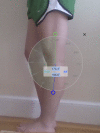
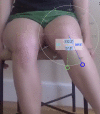
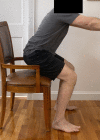
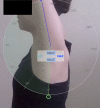

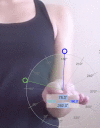
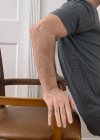
Comment in
-
La télémédecine survivra-t-elle au Covid-19 ?Rev Med Suisse. 2020 Dec 16;16(719):2411-2412. Rev Med Suisse. 2020. PMID: 33325657 French. No abstract available.
References
-
- U.S. Centers for Medicare & Medicaid Services. Telehealth services. 2020. ,mbMarch Accessed 2020 Apr 14 https://www.cms.gov/Outreach-and-Education/Medicare-Learning-Network-MLN...
-
- U.S. Centers for Medicare & Medicaid Services. CMS adult elective surgery and procedures recommendations: limit all non-essential planned surgeries and procedures, including dental, until further notice. Accessed 2020. April 14 https://www.cms.gov/files/document/covid-elective-surgery-recommendation...
-
- Burlingham B. Protractor. 2020. January 23 Accessed 2020 Apr 14. https://chrome.google.com/webstore/detail/protractor/kpjldaeddnfokhmgdlm...
-
- Karachalios T, Hantes M, Zibis AH, Zachos V, Karantanas AH, Malizos KN. Diagnostic accuracy of a new clinical test (the Thessaly test) for early detection of meniscal tears. J Bone Joint Surg Am. 2005. May;87(5):955-62. - PubMed
-
- Hegedus EJ. Thessaly test is no more accurate than standard clinical tests for meniscal tears. Evid Based Med. 2016. February;21(1):39 Epub 2015 Nov 4. - PubMed
MeSH terms
LinkOut - more resources
Full Text Sources
Medical

